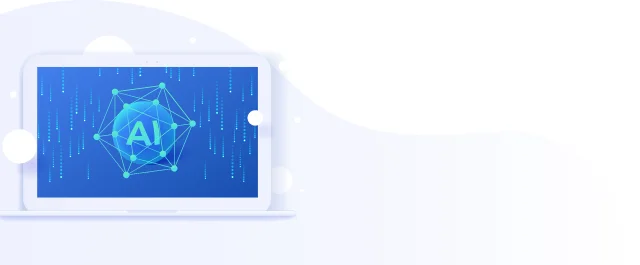
AI and the dead internet theory: Are we heading in that direction?
Topics covered:
The "dead internet theory" is a controversial concept that suggests most online content and interactions are generated by bots and algorithms. Does this dark vision have any basis in reality? What are the consequences of the growing role of artificial intelligence in shaping our online experiences?
What is the dead internet theory?
The Dead Internet Theory emerged on internet forums a few years ago. According to this theory, the internet as we know it ceased to exist around 2016, and what we see now is merely a facade created by bots and AI algorithms.
Proponents of this theory claim that most online content and interactions are generated by machines, and real human activity constitutes only a small fraction of what we see.
The entire concept is based on the following assumptions:
- Bots dominate content creation and interactions;
- Many social media accounts are fake profiles;
- Disinformation is rampant, attempting to influence our perception of reality;
- The organic reach of human-created content is deliberately suppressed.
This may sound like an episode from the new season of "Black Mirror." But can we deny that artificial intelligence plays an increasingly significant role in shaping our online experiences? Algorithms decide what content we see in our social media feeds, what ads reach us, and even what search results we get. The "invisible hand of artificial intelligence" shapes our perception of reality, often in ways we are not even aware of.

The role of AI in the current internet ecosystem
The central argument of the Dead Internet Theory is that a large portion of the content we see online is generated by AI. Indeed, tools like GPT-3 or Midjourney can create texts and images that closely resemble human-made works. Just look at the realistic portraits or articles generated by artificial intelligence to understand the scale of its capabilities.
Algorithms are also used to personalize what we see online - something that in itself carries the risk of societal polarization.
This is easy to verify. When two people with different political views use the same news portal, each will receive articles and opinions that confirm their worldview. As a result, instead of confronting different points of view, each person becomes entrenched in their "information bubble." This makes dialogue between different groups more difficult and fosters the radicalization of attitudes.
Bots and fake interactions
Another pillar of the Dead Internet Theory is the belief that a significant portion of online activity is generated by bots. According to a report by Imperva, in 2022, bots accounted for about half of all internet traffic. While fewer than 5% of accounts on Twitter belong to bots, they generate as much as 21-29% of content. Such accounts are used for various purposes, from increasing follower counts to influencing political discourse.
An even bigger problem is troll farms, where people are paid to create fake accounts and engage in interactions. Their goal may be to promote specific products, manipulate social sentiments, or influence public opinion. Therefore, it is increasingly difficult to distinguish authentic voices from those created with a specific agenda.
Armies of automated profiles played a significant role in the 2016 US presidential elections and the Brexit campaign. They were used to:
- promote false information;
- polarize debate;
- suppress opposing opinions.
In this way, bots have a real impact on democratic processes and shape public opinion.
Create your AI-based solution with us.
Can AI combat disinformation?
Although AI is seen as one of the sources of the Dead Internet problem, paradoxically, it is also used to combat its negative effects. Algorithms analyze activity patterns to detect suspicious behavior online.
The fight against disinformation is an ongoing arms race. Creators of false content constantly improve their methods to bypass AI filters. Moreover, defining what constitutes disinformation can be problematic and lead to accusations of censorship. Therefore, while artificial intelligence is an essential tool in maintaining the health of the information ecosystem, it is far from a panacea.
Is there an effective solution to this problem? Only one - internet users must learn to verify information sources, recognize fake accounts, and avoid being manipulated by emotional messaging.
This is a task for the entire society - from schools to media and non-governmental organizations. Only by raising awareness and resilience to disinformation can we protect our public discourse.
Or maybe the dead internet theory is a myth?
Even if the "dead internet" is just a conspiracy theory, it draws attention to very real problems. However, the big tech companies, accused of being passive in the face of the bot and fake interaction problem, are taking more and more actions to ensure authenticity and transparency in their services.
Facebook, Twitter, and YouTube are investing millions of dollars in systems to detect and remove inauthentic accounts and content. New regulations are also being implemented to:
- increase control over political advertising;
- limit the ability of external entities to influence voters.
Social media platforms are experimenting with solutions such as user identity verification or labeling AI-generated content.
There are also grassroots initiatives aimed at promoting authenticity and truth online. Fact-checking organizations like Demagog Association or AFP Sprawdzam verify information circulating online and expose fake news. Educators and activists conduct campaigns for conscious media use and critical thinking.
Because while technology can be a powerful tool in fighting disinformation, ultimately, it is up to us, the users, whether we allow ourselves to be manipulated or strive for the truth.

Does artificial intelligence influence what and how we see?
The most troubling aspect of the dead internet theory is how AI influences our perception of reality. If algorithms decide what information reaches us, they shape our worldview in the process.
Two people receiving entirely different sets of news and opinions based on their digital profiles may perceive the same events very differently. For example, during a global health crisis:
- User A may be bombarded with information about the effectiveness of vaccines and safety measures;
- User B may primarily see content questioning official data and promoting alternative treatments.
As a result, even though both live in the same world, their interpretation of the situation and decisions they make may be drastically different.
AI is used to create fake but realistic images and videos, known as deepfakes. Such manipulation involving a politician right before an election could have a real impact on the voting outcome. A fake video showing them in a negative light, even if later proven fabricated, leaves a lasting impression in voters' minds.
Changes in social interaction
AI not only changes how we perceive reality on the internet but also how we communicate and interact with others. More and more often, instead of a human on the other side of the screen, we are dealing with a bot or an algorithm. Chatbots serve customers in online stores, virtual assistants answer our questions, and algorithms moderate discussions on forums and social media.
On one hand, this often leads to faster and more efficient communication. If the bot is well-designed, it can solve our problem or answer our question in a matter of seconds. But can interaction with a machine replace true, human-to-human contact? Are we not losing something important when algorithms increasingly mediate our online relationships?
The future of the internet and AI
When we look to the future, different scenarios for the relationship between AI and the internet emerge. In an optimistic version, advances in AI lead to better personalization, more accurate recommendations, and more effective combat against disinformation. Algorithms become our allies in navigating the ocean of information while respecting our privacy and autonomy.
There is also a darker vision, closer to the dead internet theory. In this scenario, artificial intelligence completely dominates our online interactions, and the line between what is real and what is generated blurs for good. Fake accounts and bots become indistinguishable from real people, and manipulation of perception becomes widespread. The internet turns into an illusion, where nothing is what it seems.
The truth, as usual, lies somewhere in between. We are already seeing both positive and negative effects of AI's growing role on the internet. It's up to us to determine which direction this technology will take. It will require the development of appropriate regulations, ethical standards, and transparency mechanisms to harness AI's potential while minimizing risks.

A digital future in our hands
The dead internet theory is a fascinating, though unsettling, concept. While its extreme assumptions may seem exaggerated, it touches on real issues related to the growing role of AI in shaping our online experiences. Bots, fake interactions, and influencing perception are challenges that must be addressed.
We have the tools and means to shape the future of the internet. Media education, regulations, technological innovation - many paths lead to creating a healthier digital ecosystem. The most important thing is to remain vigilant and think critically in our online interactions. Because although AI will play an increasingly significant role, it is up to us whether the internet remains a space for authentic human communication and creativity.





